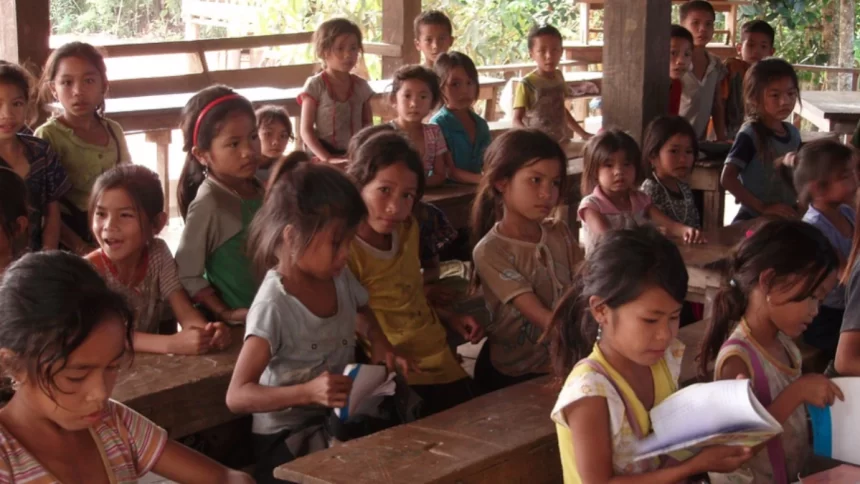The Lack of Access to Quality Education in Rural India
The lack of access to quality education in rural India is a major issue that has been plaguing the country for decades. Despite the Indian government’s efforts to improve the educational system, the quality of education in rural areas remains far below the standards of urban areas. This has resulted in a wide gap between the educational opportunities available to rural and urban students.
The primary cause of this disparity is the lack of resources in rural areas. Rural schools often lack the necessary infrastructure, such as adequate classrooms, libraries, and laboratories. Furthermore, the quality of teaching staff is often lower than in urban schools, as rural areas often lack the resources to attract and retain qualified teachers. This lack of resources has resulted in a lower quality of education in rural areas, as students are not able to access the same level of resources as their urban counterparts.
In addition to the lack of resources, rural students often face other challenges that limit their access to quality education. These include poverty, lack of transportation, and language barriers. Poverty is a major issue in rural India, and many families are unable to afford the cost of sending their children to school. Furthermore, the lack of transportation in rural areas makes it difficult for students to travel to school, and language barriers can prevent students from understanding the material being taught.
The lack of access to quality education in rural India has had a significant impact on the country’s development. Without access to quality education, rural students are unable to compete with their urban counterparts in the job market. This has resulted in a widening gap between the economic opportunities available to rural and urban students.
The Indian government has taken steps to address the issue of access to quality education in rural areas. These include increasing funding for rural schools, providing scholarships to students from rural areas, and introducing initiatives to improve the quality of teaching staff in rural schools. However, more needs to be done to ensure that all students in India have access to quality education.
The Impact of Poor Infrastructure on Rural Schooling
Poor infrastructure in rural areas can have a significant impact on the quality of schooling available to students. Inadequate infrastructure can lead to a lack of resources, inadequate facilities, and a lack of access to educational opportunities.
One of the most significant impacts of poor infrastructure on rural schooling is a lack of resources. Without access to the necessary resources, such as textbooks, computers, and other materials, students are unable to access the same level of education as their urban counterparts. This can lead to a lack of knowledge and skills, which can have a long-term impact on their future prospects.
Inadequate facilities can also be a major issue in rural areas. Without access to adequate facilities, such as libraries, laboratories, and other educational spaces, students are unable to access the same level of education as their urban counterparts. This can lead to a lack of knowledge and skills, which can have a long-term impact on their future prospects.
Finally, poor infrastructure can lead to a lack of access to educational opportunities. Without access to the same level of educational opportunities as their urban counterparts, rural students are unable to access the same level of education. This can lead to a lack of knowledge and skills, which can have a long-term impact on their future prospects.
In conclusion, poor infrastructure in rural areas can have a significant impact on the quality of schooling available to students. Without access to the necessary resources, inadequate facilities, and educational opportunities, students are unable to access the same level of education as their urban counterparts. This can lead to a lack of knowledge and skills, which can have a long-term impact on their future prospects.
The Challenges of Recruiting and Retaining Quality Teachers in Rural Areas
Recruiting and retaining quality teachers in rural areas can be a challenge due to a variety of factors. Rural areas often have limited resources, making it difficult to attract and retain quality teachers. Additionally, rural areas often have fewer educational opportunities than urban areas, making it difficult to attract and retain quality teachers who are looking for more professional development opportunities.
One of the biggest challenges of recruiting and retaining quality teachers in rural areas is the lack of competitive salaries. Rural areas often have lower salaries than urban areas, making it difficult to attract and retain quality teachers. Additionally, rural areas often have fewer benefits than urban areas, making it difficult to attract and retain quality teachers who are looking for more comprehensive benefits packages.
Another challenge of recruiting and retaining quality teachers in rural areas is the lack of professional development opportunities. Rural areas often have fewer educational opportunities than urban areas, making it difficult to attract and retain quality teachers who are looking for more professional development opportunities. Additionally, rural areas often have fewer resources for professional development, making it difficult to provide quality professional development opportunities to teachers.
Finally, rural areas often have fewer resources for teacher recruitment and retention. Rural areas often have fewer resources for advertising and marketing, making it difficult to attract and retain quality teachers. Additionally, rural areas often have fewer resources for teacher recruitment and retention programs, making it difficult to provide quality programs to attract and retain quality teachers.
Recruiting and retaining quality teachers in rural areas can be a challenge, but it is not impossible. By providing competitive salaries, comprehensive benefits packages, and quality professional development opportunities, rural areas can attract and retain quality teachers. Additionally, by providing resources for teacher recruitment and retention programs, rural areas can provide quality programs to attract and retain quality teachers.
The Need for Improved Technology in Rural Schools
The need for improved technology in rural schools is becoming increasingly apparent. In today’s digital age, access to technology is essential for students to gain the skills and knowledge they need to succeed in the 21st century. Unfortunately, rural schools often lack the resources to provide students with the same level of technology as their urban counterparts.
Rural schools are often located in remote areas with limited access to high-speed internet and other technological resources. This lack of access can have a significant impact on students’ ability to learn. Without access to the same technology as their urban peers, rural students may not be able to keep up with the pace of learning and may fall behind in their studies.
In addition, rural schools often lack the resources to provide students with the latest technology. This can lead to students using outdated technology, which can be difficult to use and may not be able to keep up with the demands of modern education. Without access to the latest technology, rural students may not be able to take advantage of the same educational opportunities as their urban peers.
Fortunately, there are steps that can be taken to improve technology in rural schools. Schools can work with local businesses and organizations to provide students with access to the latest technology. Schools can also work with local governments to secure funding for technology upgrades. Finally, schools can work with parents and community members to ensure that students have access to the technology they need to succeed.
By taking these steps, rural schools can ensure that their students have access to the same technology as their urban peers. This will help to ensure that rural students have the same educational opportunities as their urban counterparts and will help to bridge the digital divide between rural and urban schools.
The Role of Community Involvement in Improving Rural Education
Rural education is an important part of the educational system in many countries. Unfortunately, rural schools often lack the resources and support necessary to provide students with a quality education. Community involvement is an essential part of improving rural education. By engaging the local community, rural schools can access resources and support that can help them provide a better education for their students.
One of the most important ways that community involvement can improve rural education is by providing additional resources. Many rural schools lack the resources necessary to provide students with a quality education. By engaging the local community, rural schools can access resources such as books, computers, and other materials that can help them provide a better education for their students. Additionally, community members can provide financial support to help rural schools purchase the resources they need.
Community involvement can also help rural schools access support from outside organizations. Many organizations are dedicated to improving rural education, but they often lack the resources to do so. By engaging the local community, rural schools can access the resources and support of these organizations. This can include access to grants, technical assistance, and other forms of support that can help rural schools provide a better education for their students.
Finally, community involvement can help rural schools build relationships with local businesses and organizations. These relationships can provide rural schools with access to resources and support that can help them provide a better education for their students. For example, local businesses may be willing to donate resources or provide internships for students. Additionally, local organizations may be willing to provide mentorship and other forms of support to help rural schools improve their educational offerings.
In conclusion, community involvement is an essential part of improving rural education. By engaging the local community, rural schools can access resources and support that can help them provide a better education for their students. This includes access to additional resources, support from outside organizations, and relationships with local businesses and organizations. By taking advantage of these opportunities, rural schools can ensure that their students receive the quality education they deserve.





